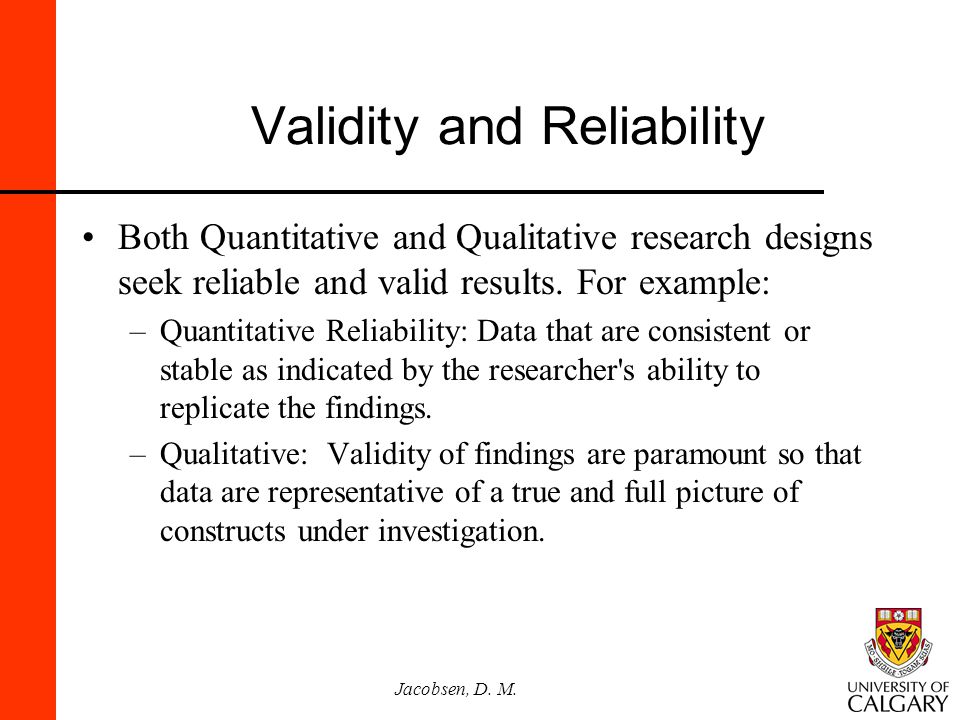
Achieving a 95% Confidence Level and 5% Sampling Error for every segregation of the data will ensure that the research study is a valid reflection of respondent perceptions. validity (or tool) measures the intended construct Homogeneity (internal consistency) is assessed using Criterion The extent to which a research instrument item-to-total correlation, split-half reliability, Kuder- validity is related to other instruments that Richardson coefcient and Cronbach’s. to enhance the truthfulness or validity of qualitative findings (Chenitz & Swanson 1986, Crabtree & Miller 1992, Field & Morse 1985, Le Comple & Goetz 1982, Morse 1991, Sandelowski 1986 and Corbin & Strauss 1990).

In all scientific research, the possibility for some error exists, which cannot be totally removed. Through uncompromising adherence to scientific research principles, you eliminate all known sources of error, including but not limited to, the biases and artificial skewing of the data typically found in the areas of: Validity and reliability as central quality indicators originated in quantitative research, which is dominated by the positivist paradigm (Golafshani 2003). You should employ the highest standards of scientific research to ensure that your survey results are valid. The validity and the norms of rigor that are applied to quantitative research are not entirely applicable to qualitative research. The validity of a survey is considered to be the degree to which it measures what it claims to measure.

Validity is important because it determines what survey questions to use, and helps ensure that researchers are using questions that truly measure the issues of importance.

There are many different types of Survey Validity, such as construct validity, convergent validity, and content validity. In quantitative only be completed on questions with two answers (eg, studies, rigour is determined through an evaluation of yes or no, 0 or 1).3 the validity and reliability of the tools or instruments Cronbach’s is the most commonly used test to utilised in the study. Reliability and validity are concepts used to evaluate the quality of research, They indicate how well a method, technique or test measures something, Reliability is about the consistency of a measure, and validity is about the accuracy of a measure, reliability vs validity in research.


 0 kommentar(er)
0 kommentar(er)
